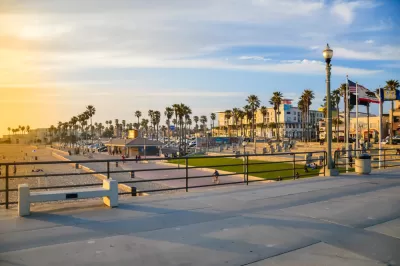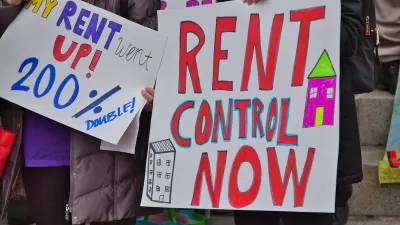A controversial desalination plant in Orange County could receive massive state subsidies, but advocates argue the money would be better spent on affordable housing projects to relieve the state's housing crisis.

The California Debt Limit Allocation Committee could allow a tax-free bond sale for a controversial desalination project in Orange County while ignoring the opportunity to make close to $2 billion available to affordable housing projects, according to a report by Oscar Rodriguez and Garry Brown.
As the panel that decides allocations that let companies and developers finance projects at low interest rates, the commission plays a crucial role in the success of affordable housing projects, which rely on below-market financing to offer below-market rent. According to the article, if the allocations are diverted to the desalination plant, affordable housing would also lose $880 billion in federal tax credits, for a total of almost $2 billion in lost funds.
The authors argue that "no good case can be made for diverting taxpayer money to the private for-profit desalination project," which, according to the article, "has been deemed the least cost-effective and most financially risky of all water supply alternatives in Orange County" and threatens to raise water costs for low-income families and small businesses.
With all the economic, social, and environmental risks posed by the plant, Rodriguez and Brown call on the state to reject subsidizing it with public funds and put the resources toward urgently needed affordable housing instead.
FULL STORY: Invest in housing, people instead of corporate welfare

Maui's Vacation Rental Debate Turns Ugly
Verbal attacks, misinformation campaigns and fistfights plague a high-stakes debate to convert thousands of vacation rentals into long-term housing.

Planetizen Federal Action Tracker
A weekly monitor of how Trump’s orders and actions are impacting planners and planning in America.

San Francisco Suspends Traffic Calming Amidst Record Deaths
Citing “a challenging fiscal landscape,” the city will cease the program on the heels of 42 traffic deaths, including 24 pedestrians.

Defunct Pittsburgh Power Plant to Become Residential Tower
A decommissioned steam heat plant will be redeveloped into almost 100 affordable housing units.

Trump Prompts Restructuring of Transportation Research Board in “Unprecedented Overreach”
The TRB has eliminated more than half of its committees including those focused on climate, equity, and cities.

Amtrak Rolls Out New Orleans to Alabama “Mardi Gras” Train
The new service will operate morning and evening departures between Mobile and New Orleans.
Urban Design for Planners 1: Software Tools
This six-course series explores essential urban design concepts using open source software and equips planners with the tools they need to participate fully in the urban design process.
Planning for Universal Design
Learn the tools for implementing Universal Design in planning regulations.
Heyer Gruel & Associates PA
JM Goldson LLC
Custer County Colorado
City of Camden Redevelopment Agency
City of Astoria
Transportation Research & Education Center (TREC) at Portland State University
Jefferson Parish Government
Camden Redevelopment Agency
City of Claremont





























